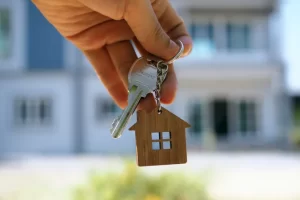When it comes to getting a mortgage, there’s no shortage of misinformation. Many homebuyers, especially…
Tips for Buying a Newly Constructed Home
Suppose you’re considering buying a newly constructed home. In that case, there are several benefits to remember, such as more opportunities to customize your home and lower maintenance costs over the first few years. However, to ensure a great experience when watching your new home come to life, it’s essential to follow these tips:
1. Research the builder: Choosing a reputable builder is crucial to having a well-constructed home. Check the builder’s reviews and visit their previous projects to get an idea of their quality of work. Ask questions like how often a superintendent will see the construction site, which features are included in the build, and how often you can visit the construction site. Red flags to look out for are bad reviews from past clients, hesitation in answering questions, and disorganization on their construction sites.
2. Maintain a clear line of communication: It’s essential to stay in contact with your builder to prevent misunderstandings down the road. Start with a pre-construction meeting to review construction details and set expectations for progress updates and communication frequency.
3. Visit the construction site: Visiting the site frequently will help ensure communication in the building process and allow you to notice small details the builder may have overlooked. Please take pictures of features before they’re covered up with drywall.
4. Understand your construction timeline: New construction can take 7 to 12 months, but weather conditions and material delivery can cause delays. Consider possible delays so you’re away from home for a few weeks.
5. Inspect your new home: Even newly constructed homes may have structural issues. Hire a professional inspector to ensure the quality of the build. There should be a few inspections of your new home: the foundation, the pre-drywall, and the final inspection. Any issues found can be addressed with the builder, and a solution can be negotiated. There are many benefits to buying a newly constructed home. For example, new builds allow you to customize your home. Most newly constructed homes have lower maintenance costs over the first few years.
Remember these essential tips to ensure the best possible experience when watching your new home come to life!
Research the builder
Choosing a reputable builder is essential to a well-constructed home. Make sure to research their reviews. You can even drive by their prior projects to get an idea of their quality of work. Looking at the builder’s previous projects can give you more understanding of their experience and reputation.
Other questions you should ask when researching your builder:
- How often will a super visit the construction site?
- Which features will be included in the build, and which are upgrades?
- How often can I see the construction site?
- How many properties have you sold and completed so far?
There are red flags to look for when researching your builder. Several bad reviews from other buyers can raise significant concerns. This could be a sign if a builder, super, or project manager seems hesitant to answer your questions.
Another thing to look for is that if you visit their other sites and they seem disorganized, this could be a sign.
Maintain a clear line of communication.
It’s also essential to stay in contact with your builder and GC. The better you communicate, the less likely you’ll have to deal with future misunderstandings. A great way to start a good line of communication is with a pre-construction meeting.
In this meeting, you will review the construction details with your project manager. You can also set certain expectations, such as how often the builder will give you progress updates. Can you call or text the builder or GC, and if so, how often?
Visit the site.
Stopping by the site is a great way to ensure communication in the building process. Watching your dream home come to be from the ground up is a fun and rewarding experience (with a bit of patience)!
When you visit the site often, you may notice small details the builder may have overlooked. Also, take pictures! Pictures can help you later if you need to know the exact location of a pipe or electrical connection. It’s best to take photos of these features before they’re covered with drywall.
Understand your construction timeline.
Generally, new construction can take up to 12 months to complete. However, many factors can lead to delays, such as weather conditions or waiting to deliver materials. Several unexpected issues can push back the construction timeline. Because of this, most builders add a one to two-week buffer into those timelines. If you’re selling your current home or finishing a leasing agreement, remember these possible delays so you’re not homeless for a few weeks.
Have your new home inspected.
Even newly constructed homes may have issues. Hiring a professional and licensed inspector can ensure the build’s quality is there. Depending on your preference, there should be a few inspections of your new home: the foundation, the pre-drywall, and the final inspection.
Suppose there are any problems in the quality of construction. In that case, the inspector will take note of these issues in the report and suggest a solution. Once you have this information, you can address these concerns with the builder and negotiate a solution.





